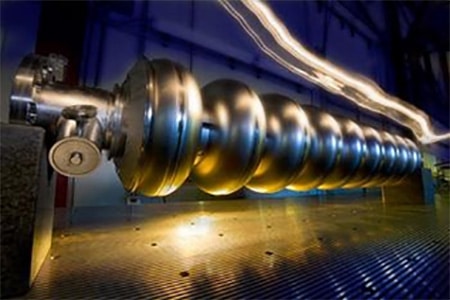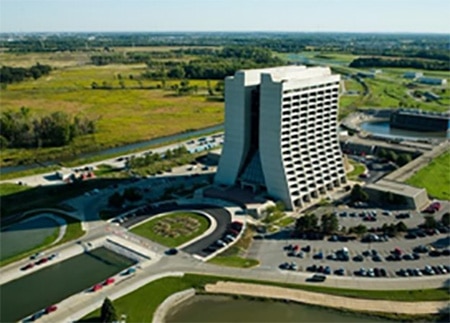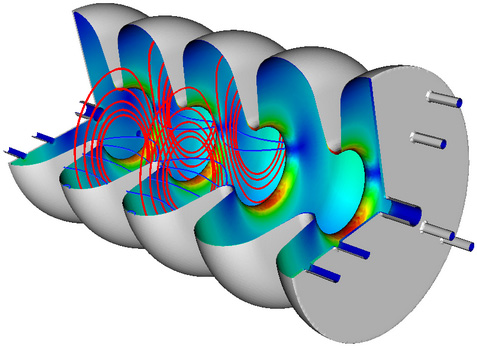Crab Cavity Case Study
Superconducting crab cavities are an important component of the large particle accelerators used in research, such as the Large Hadron Collider at CERN. Named for the apparent sideways movement of the proton bunches as they move through the narrowest part of the crab cavity, these cavities are used to provide transverse deflection or “tilt” to the proton bunches emitted from the accelerator beams. This tilt enhances the overlap of the proton beams at the collision point which increases the probability of particle collisions and maximizes the power of the accelerator system.
In 1999 the A15 cavity was designed at Fermi National Laboratory (Fermilab) in Batavia, IL for the development of a separated K+ beam that would operate at 3.9 GHz. Early computational studies of the A15 cavity showed discrepancy with experimental studies which put into doubt the ability to use simulation tools for studies. Unable to resolve this discrepancy with existing simulation tools, Dr. Leo Belantoni of Fermilab reached out to the team at Tech-X.


Using VSim, the Tech-X team built a model of Dr. Belatoni’s crab cavity to if they could reproduce the results of the experimental studies. Since VSim is a fully parallelized electromagnetic simulation tool capable of running on high performance computing systems, simulations were performed at high resolutions on supercomputers at Department of Energy centers.
With the embedded boundary and frequency extraction methods used by VSim, Tech-X scientists were able to provide better accuracy than earlier simulations, as well as extract the frequency and modes of the cavity. In addition, VSim’s post-processing tools enabled accurate extraction of near degenerate cavity modes and produced high quality visualizations.
Using the detailed simulations provided by Tech-X, Dr. Belantoni looked again for an explanation for the discrepancy of simulation and experimental results. As he reviewed the simulation results, he realized that the discrepancy was actually due to machining errors inside the crab cavity itself.
Though those errors were thought to be within specified tolerances, they hadn’t been accounted for in previous software simulations as those tools couldn’t accurately replicate the boundary conditions of the crab cavity. With this new information, the crab cavity could now be accurately simulated, and computational studies were validated as an important step in the design of particle accelerators.

“Previous simulation results for the A15 cavity showed a 2.8 MHz discrepancy with experimental measurements in the resonant frequency of the pi mode. Understanding this discrepancy was difficult but made much easier with the use of VSim [then called VORPAL]. Working with Tech-X scientists, we discovered machining errors which, while within initially specified tolerances, were never accounted for in previous simulations. Once this was corrected in the simulation, we saw an accuracy of 1 part in 104 in the resonance frequency of the pi mode. Understanding this discrepancy improved our confidence in, and understanding the process of, designing these key components for the next generation of accelerators.”
Leo Belantoni
Fermilab
